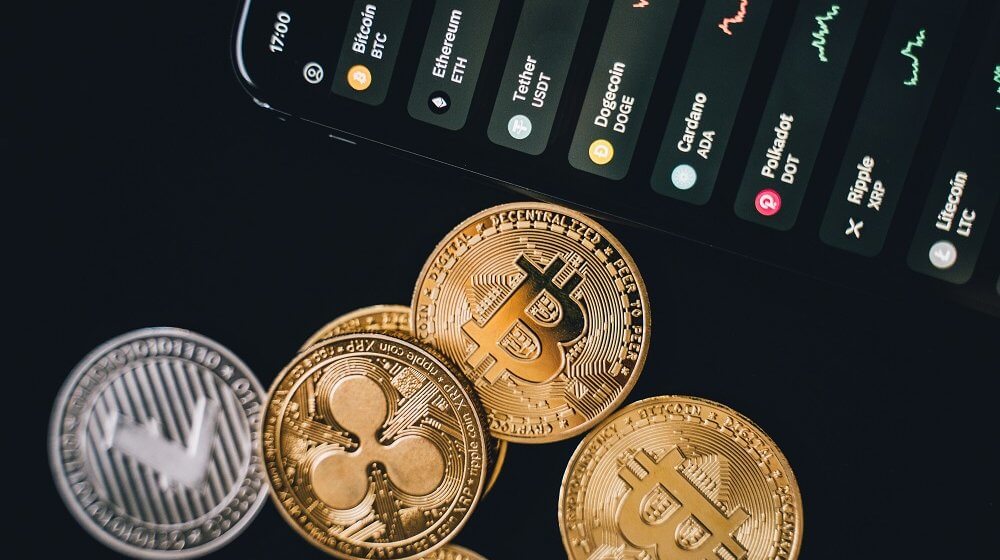|
LISTEN TO THIS THE AFRICANA VOICE ARTICLE NOW
Getting your Trinity Audio player ready...
|
Crypto day trading refers to the practice of buying and selling cryptocurrencies within the same trading day, in an attempt to make a profit. This type of trading can be highly speculative and risky, as the prices of cryptocurrencies can be highly volatile. Day traders typically use technical analysis and charts to make decisions about when to buy and sell, and may use leverage to amplify their potential gains (or losses).
Why choose Day Trade Crypto?
There are a few reasons why someone might choose to day trade cryptocurrency:
Potential for high returns: Cryptocurrency prices can be highly volatile, which can create opportunities for traders to make large profits in a short period of time.
Access to leverage: Many crypto exchanges allow traders to use leverage, which can amplify potential gains. However, it also amplifies potential losses.
Access to a 24/7 market: Cryptocurrency markets are open 24/7, which allows traders to take advantage of market movements at any time.
Access to a variety of cryptocurrencies: With over 4,000 cryptocurrencies on the market, traders have a wide variety of assets to choose from.
It’s worth noting that Day trading crypto carries a high level of risk and is not suitable for all investors. It’s important to understand the risks and have a well-crafted strategy before engaging in day trading.
Strategies of Crypto Day Trading:
There are many different strategies that traders can use when day trading cryptocurrency, some of which include:
Technical analysis: This involves using charts and technical indicators to identify patterns and make predictions about future price movements.
Breakout trading: This strategy involves buying when the price of a cryptocurrency breaks above a key resistance level or selling when it falls below a key support level.
News trading: This strategy involves monitoring news and events that can affect the price of a cryptocurrency, such as regulatory announcements or the listing of a coin on a new exchange.
Scalping: This is a strategy where a trader takes advantage of small price movements in a short period of time, usually within minutes or seconds.
Algo-Trading: Using pre-programmed instructions for buying and selling that is based on certain indicators, mathematical models or historical data.
Mean-reversion: This is a strategy where a trader takes advantage of the tendency for the price of an asset to return to its average over time.
It’s important to note that these strategies are not mutually exclusive and can be combined to suit one’s trading style. Traders should also consider the risk management techniques while using these strategies.
Scalping in Crypto Day Trading
Scalping is a day trading strategy that involves taking advantage of small price movements in a short period of time, usually within minutes or seconds. Scalpers aim to make several small profits on a large number of trades, rather than relying on a small number of large trades to make a profit.
When scalping in the cryptocurrency market, traders will often use technical indicators and chart patterns to identify short-term price movements. They’ll then enter and exit trades quickly, taking small profits and moving on to the next trade.
One of the benefits of scalping is that it allows traders to take advantage of the high volatility in the crypto market, which can result in large price swings in a short period of time. However, scalping also carries a high level of risk, as the small profit margins on each trade can be quickly erased by even a small price movement in the opposite direction.
Traders who choose to scalp should have a well-crafted trading plan, including a set of strict rules for entering and exiting trades, as well as risk management techniques to limit potential losses.
Range Trading Strategy
Range trading is a trading strategy that involves buying an asset when its price reaches a certain level of support and selling when it reaches a certain level of resistance. This strategy is based on the idea that the price of an asset will tend to oscillate within a certain range, rather than continuing to rise or fall indefinitely.
In the context of cryptocurrency, range trading can be applied by identifying key levels of support and resistance using technical analysis tools such as trendlines, moving averages, or Fibonacci retracements. Once these levels are identified, traders can set buy and sell orders at the support and resistance levels, respectively.
When the price of the cryptocurrency reaches the support level, the trader will buy the asset, and when it reaches the resistance level, the trader will sell the asset. By buying low and selling high, the trader aims to make a profit.
Range trading can be a good strategy for traders who are looking for a way to take advantage of the volatility in the crypto market while minimizing risk.
Arbitrage Strategy
Arbitrage is a trading strategy that involves taking advantage of price differences between different markets or exchanges. In the context of cryptocurrency, this can refer to buying a certain coin on one exchange where the price is lower and then selling it on another exchange where the price is higher, profiting from the difference.
Cryptocurrency markets are still relatively new and the prices can vary greatly between different exchanges, this can create opportunities for arbitrage. For example, if the price of Bitcoin on Exchange A is $50,000 and the price on Exchange B is $51,000, a trader could buy on Exchange A and sell on Exchange B, making a profit of $1000.
Arbitrage can also be done by taking advantage of the differences in prices of the same coin across different pairs, for example buying BTC/USDT on one exchange and sell it for BTC/ETH on another exchange.
Arbitrage can be a low-risk and profitable strategy, but it requires a significant amount of capital, fast execution, and the ability to move funds quickly between exchanges. It also requires to be constantly monitoring prices on different exchanges and the ability to act fast, as the price differences can disappear quickly.



























